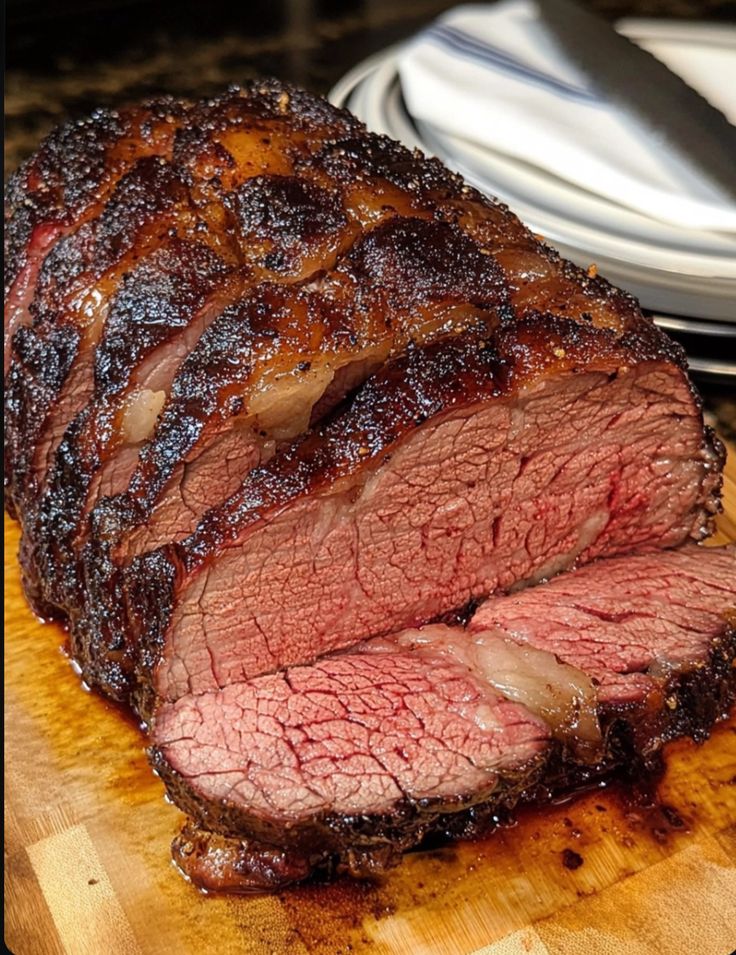


Savor the succulent taste of perfectly dry-aged prime rib, a dish that marries tradition with gourmet flair, delivering an unforgettable dining experience.
For a perfectly dry-aged prime rib roast, ensure your meat is dry-aged for 21 to 28 days for optimal flavor. Before cooking, let the roast sit at room temperature for 2 hours to ensure even cooking. Preheat your oven to 450°F (232°C) for a nice crust. Season generously with kosher salt and freshly cracked black pepper—don't be shy, as the seasoning forms the foundation of flavor. Roast for 15 minutes at the high temperature, then reduce the oven to 325°F (163°C) and continue roasting until the internal temperature reaches 120°F (49°C) for rare, about 15-20 minutes per pound, or 130°F (54°C) for medium-rare. Rest the roast for at least 30 minutes, tented with foil, to allow the juices to redistribute. Carve with a sharp knife, slicing against the grain. For a twist, consider adding a rub of crushed garlic, rosemary, and thyme before roasting for an aromatic enhancement. Serve with horseradish cream or a red wine jus for an elegant finish. Remember, the key to dry aging is patience, and the result is a tender, flavorful roast that’s well worth the wait. Keep leftovers tightly wrapped in the fridge for up to 3 days or freeze for longer storage.
Preparing a Dry Aged Prime Rib Roast is akin to crafting a masterpiece with your own hands. The symphony of flavors that emerges from this dish is nothing short of extraordinary. The dry aging process imparts a nuttiness and depth to the meat that is simply unmatched. As you slice into the roast, you’ll notice the beautiful marbling, which transforms into pockets of buttery richness. Each bite is a perfect balance of savory and succulent, a testament to the time and care invested in its preparation. This dish is more than just a meal; it’s an experience, a celebration of culinary art.
I still remember the first time I served this prime rib roast at a family gathering. The room was filled with an aroma so enticing, it pulled everyone to the table even before the roast was fully carved. The oohs and aahs that followed each bite were the kind of genuine satisfaction that only a well-prepared dish can evoke. It’s moments like these that remind me why I love cooking—bringing people together over a shared appreciation for good food.
Serve your prime rib with classic accompaniments like creamy horseradish sauce or a rich red wine jus. As for sides, consider buttery mashed potatoes and roasted vegetables to complement the meat’s robust flavor. If you happen to have leftovers, which is a rarity, they can be stored in an airtight container in the refrigerator for up to three days. Reheat gently to maintain the meat’s tenderness, or enjoy it cold in sandwiches or salads.
I encourage you to try this recipe and make it your own. Perhaps add a crust of your favorite herbs or a sprinkle of smoked salt for an extra burst of flavor. Don’t hesitate to share your results or variations in the comments—I’d love to hear about your culinary adventures. Remember, cooking is a journey, and every dish is an opportunity to learn and explore. Happy roasting!